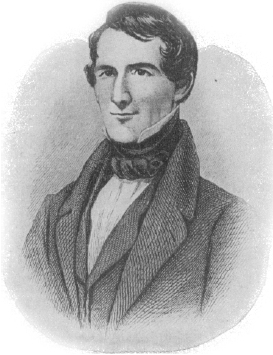The American Fur Company
As the search for the Steamboat Malta continues, we will update this blog when new information comes to light. For now, we would like to share some of our research about the Malta’s role in the 19th-century fur-trading industry. The most exciting thing about the prospect of finding the Malta is that it may yield artifacts more than a decade older than those excavated from the Steamboat Arabia. When the Malta hit a snag and sank in 1841, it was carrying supplies for the American Fur Company, but the story actually begins decades earlier.
In 1821 the savvy owner of the American Fur Company, John Jacob Astor, contracted with a St. Louis company to supply his trade goods. Berthold & Chouteau was the name of this firm, based in St. Louis and owned by Bartholomew Berthold and Pierre Chouteau Jr. This is important because the Chouteau family included some of the earliest French settlers of Missouri, who were prolific traders. In fact, Pierre’s brother Rene Auguste Chouteau had established fur-trading outposts in present-day Oklahoma, while his half-brother Francois Chouteau took his trading operation to Kansas City, MO. After Astor joined forces with Berthold & Chouteau, he was able to undersell his opponents and effectively establish a fur-trading monopoly in the Great Plains.
Interestingly, the fur trade was a global endeavor. American furs made their way to England and Germany, while many of the goods exchanged for the furs originated abroad. For example, the American Fur Company had a contract with a glass bead manufacturer in Venice. Steamboats would carry supplies and trade goods from the St. Louis warehouses to three western depots—Fort Union (present-day New Mexico), Fort Pierre (present-day South Dakota), and Fort Laramie (present-day Wyoming). At these locations, American Indians traded buffalo pelts that made a journey through St. Louis and then to points international.
Although beaver trade had declined due to over-hunting by mid-century, bison robes reached their peak production. By 1850 the American Fur Company averaged 100,000 bison robes annually (up from 40,000 in the 1830s)! Obviously this expansion was not sustainable over the long term, and the fur trade was practically history by the 1860s. Changing fashions and the effects of westward expansion took their toll.
If we are able to locate and excavate the Malta—and if her treasures are intact—she may give us new insights into the global fur-trading industry of the 19th century. The Steamboat Arabia carried international treasures in 1856, near the end of an era; we are interested to investigate the rise of a global trade by discovering an earlier cache of goods.

An assortment of beads, traps, guns, and other trade goods on display at the Arabia Steamboat Museum in Kansas City
Sources:
David J. Wishart, “American Fur Company,” Encyclopedia of the Great Plains. University of Nebraska Lincoln: 2011 <http://plainshumanities.unl.edu/encyclopedia/doc/egp.ind.005>
Emily Zimmerman, “The Fur Trade: Beaver Powered Manufacturing,” The Mountain Men: Pathfinders of the West 1810-1860. University of Virginia. <http://xroads.virginia.edu/~HYPER/HNS/Mtmen/furtrade.html>
“Early Exploration and the Fur Trade,” National Park Service. <http://www.nps.gov/nr/travel/pierre_fortpierre/early_exploration_fur_trade_essay.html>
Pierre Chouteau Jr. image from Wikimedia. <http://commons.wikimedia.org/wiki/File:Pierre_Chouteau_Jr.jpg>

